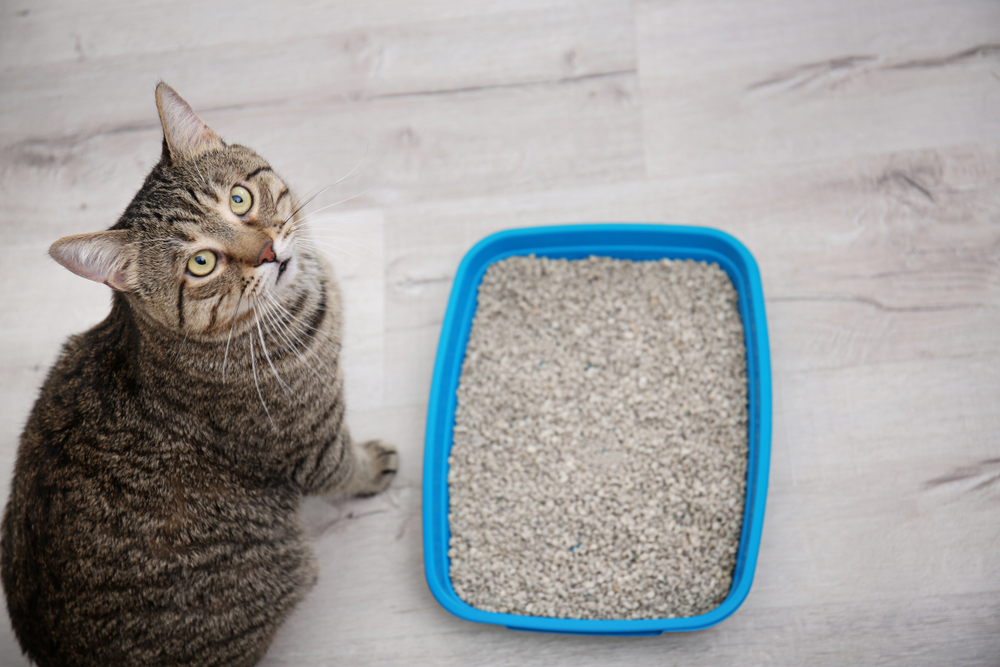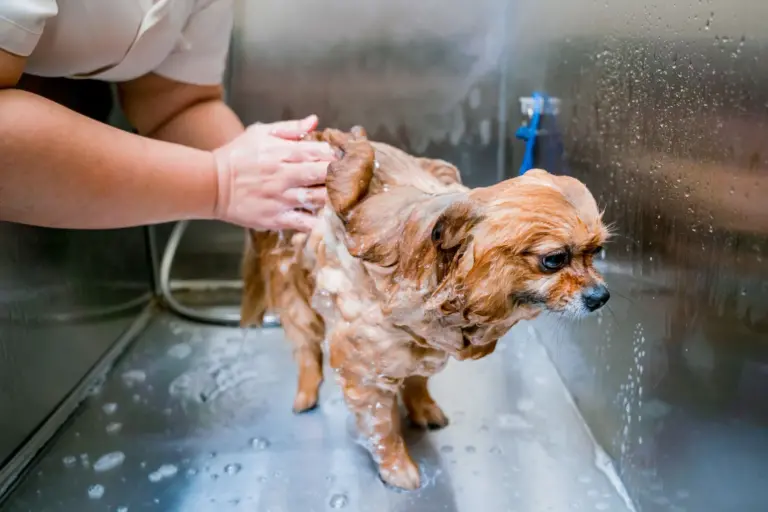As a pet owner, one of the common dilemmas you may face is determining how often you can shower your furry companion. Maintaining your dog’s hygiene is essential for their health and well-being, but overdoing it can also have adverse effects on their skin and coat. In this blog post, we will delve into the topic of how often you can shower a dog, considering factors such as breed, coat type, and lifestyle. By understanding the proper bathing frequency and using the right products, you can ensure that your dog stays clean and comfortable without causing any harm. Let’s explore the dos and don’ts of doggie bath time!
Introduction: Understanding the Importance of Dog Hygiene
Ensuring proper hygiene for your furry friend is crucial for their health and well-being. One essential aspect of dog care is bathing, but the frequency can vary based on several factors, including breed, activity level, and skin condition.
The Benefits of Regular Dog Baths
Regular bathing helps in the removal of dirt, debris, and excess oils from the dog’s coat, preventing skin issues and infections. It also keeps your dog smelling fresh and looking clean.
Factors to Consider
When determining how often to bathe your dog, consider factors such as their breed, coat type, and lifestyle. Dogs with oily skin may require more frequent baths, while those with sensitive skin may need less frequent bathing to avoid irritation.
- Breed: Different breeds have varying grooming needs. Research your dog’s breed to understand its specific requirements.
- Skin Condition: Dogs with skin conditions may need medicated baths as prescribed by the vet.
- Activity Level: Highly active dogs may need more frequent baths to remove dirt and odors.

Factors to Consider Before Bathing Your Dog
Bathing your dog is important for their hygiene, but it’s essential to consider a few factors before proceeding with the bath.
1. Coat Type and Skin Sensitivity
Understanding your dog’s coat type and skin sensitivity is crucial. Dogs with sensitive skin may require special shampoo formulations to prevent irritation.
2. Frequency of Baths
The frequency of baths depends on various factors like activity level and coat length. Dogs that spend more time outdoors may need more frequent baths.
- Consider bathing your dog every 4-6 weeks unless recommended otherwise by a vet.

Recommended Bathing Frequency for Different Dog Breeds
When it comes to bathing your furry friend, the frequency can vary based on the breed. How often can you shower a dog? Let’s explore the bathing needs of different dog breeds to keep them clean and healthy.
Bathing Frequency Guidelines
It’s essential to consider your dog’s breed, coat type, and activities when determining how frequently to bathe them. As a general guideline:
- Short-haired breeds: Dogs with short coats may require bathing every 2-3 months.
- Medium-haired breeds: Dogs with medium-length coats can be bathed every 4-6 weeks.
- Long-haired breeds: Dogs with long coats may need bathing every 6-8 weeks, or more frequently if they get dirty often.
Special Considerations
Some breeds have specific bathing needs due to their coat characteristics or skin conditions. Always consult with your veterinarian for personalized recommendations.
Ensure you use mild dog shampoo and thoroughly rinse your dog to prevent skin irritations. Regular brushing between baths helps maintain coat health and cleanliness.
Tips for Bathing Your Dog Effectively
Bathing your dog is an essential part of maintaining their hygiene and health. For most dogs, how often can you shower a dog depends on their breed, coat type, and lifestyle.
Use Suitable Dog Shampoo
Always use a dog-specific shampoo to avoid skin irritation. Look for shampoos formulated for your dog’s coat type.
Rinse thoroughly to prevent residue that could cause itching or dryness.
Brush Before Bathing
Brush your dog’s coat before bathing to remove tangles and mats. This will make the bathing process more effective and enjoyable for your dog.
Proper Bathing Technique
Use lukewarm water to bathe your dog, ensuring it’s not too hot or too cold. Start by wetting your dog’s coat thoroughly, then apply shampoo, and gently massage it in.
Rinse your dog completely to remove all traces of shampoo.
Dry Thoroughly
After bathing, use a towel to dry your dog’s coat thoroughly. You can also use a hairdryer on a low setting but ensure it’s not too hot to avoid skin irritation.
Common Mistakes to Avoid When Showering Your Dog
Showering your dog is an essential part of their grooming routine. However, there are common mistakes that pet owners should avoid to ensure a safe and effective bathing experience for their furry friend.
Using Human Shampoo
One common mistake is using human shampoo on dogs. Human shampoos have a different pH level than dog shampoos, which can irritate a dog’s skin causing skin issues. It is important to use a shampoo specifically formulated for dogs to avoid skin problems.
Not Drying Thoroughly
Another mistake is not drying your dog thoroughly after a bath. Leaving your dog wet can lead to skin infections and discomfort. Ensure to dry your dog completely using a towel or a hairdryer on a cool setting.
Alternatives to Bathing for Keeping Your Dog Clean
While regular bathing is essential for maintaining your dog’s hygiene, there are alternative methods you can explore to keep your furry friend clean and fresh in between baths. These alternatives not only help in reducing bathing frequency but also cater to dogs who dislike water or have skin sensitivities.
1. Dry Shampoo
Dry shampoo is a quick and convenient option to refresh your dog’s coat without water. Simply apply the dry shampoo, massage it into the fur, and then brush it out. It helps absorb excess oils and eliminates odors, leaving your dog smelling clean.
2. Brushing
Regular brushing is a great way to keep your dog clean and remove dirt, debris, and loose fur from their coat. It helps distribute natural oils, promoting healthy skin and a shiny coat. Use a suitable brush based on your dog’s breed and coat type.
3. Wet Wipes
Utilize wet wipes specifically designed for pets to quickly wipe down your dog’s paws, muzzle, and coat in between baths. Make sure to choose gentle wipes that are safe for your dog’s skin to avoid any irritation or discomfort.
Signs That Your Dog Needs a Bath
Keeping your furry friend clean is essential for their overall health and well-being. Knowing when to give your dog a bath is crucial to maintaining their hygiene. Here are some signs that indicate your dog may need a bath:
Visible Dirt or Grime
If you notice visible dirt or grime on your dog’s fur, it’s a clear indication that they need a bath. Regular baths help remove dirt and debris, keeping your dog’s coat clean and healthy.
Unpleasant Odor
An unpleasant odor emanating from your dog is a sign that they need a bath. Bad smells can indicate bacterial growth or skin issues that require cleansing.
Scratching or Itching
Constant scratching or itching can be a signal that your dog has irritants on their skin. A soothing bath can help relieve itching and remove allergens.
Frequently Asked Questions
- Why is bathing important for dogs?
- Bathing helps to keep your dog’s coat and skin clean and healthy, and can also help to reduce shedding and odors.
- How frequently should I bathe my dog?
- The frequency of bathing a dog depends on their breed, activity level, and skin condition. In general, most dogs can be bathed every 4-6 weeks.
- Are there any risks associated with bathing a dog too often?
- Yes, bathing a dog too frequently can strip their skin of natural oils, leading to dryness and irritation. It is important to follow recommended bathing schedules based on your dog’s specific needs.
- Can I use human shampoo on my dog?
- No, human shampoo is not suitable for dogs as it can disrupt the pH balance of their skin. It is best to use a dog-specific shampoo recommended by your veterinarian.
Final Thoughts
Understanding how often you can shower a dog is vital for their overall well-being. While the frequency varies based on breed, lifestyle, and skin condition, a general guideline is to bathe your dog every 4-6 weeks. Over-bathing can strip their skin of natural oils, leading to dryness and irritation, while under-bathing can result in odors and skin issues.
Regular grooming, including brushing and checking for pests, is equally important in maintaining your dog’s hygiene. Consulting your vet for personalized advice is recommended to ensure your furry friend’s bathing schedule suits their specific needs. Remember, a clean and healthy pup is a happy pup!



